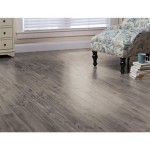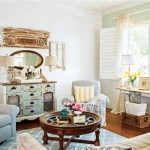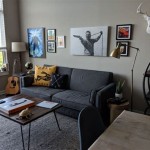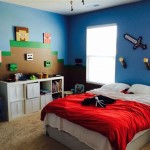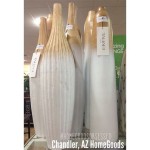How to Determine Your Bedroom Decor Style: A Comprehensive Quiz Approach
Decorating a bedroom is a highly personal endeavor. The bedroom serves as a sanctuary, a place for rest, relaxation, and rejuvenation. Therefore, the aesthetics of the room should reflect the occupant's individual preferences and promote a sense of well-being. However, with the vast array of design styles and decorating options available, it can be challenging to pinpoint a specific direction. A "How Should I Decorate My Bedroom" quiz can serve as a valuable tool in navigating this decision-making process, providing insights into the user's underlying tastes and suggesting suitable design styles.
These quizzes generally operate by presenting a series of questions related to various aspects of interior design, such as color preferences, preferred textures, furniture styles, and overall ambiance. The responses are then analyzed to identify patterns and correlations that align with established design principles and aesthetics. The objective is to translate abstract preferences into concrete design recommendations, helping individuals create a harmonious and personalized bedroom space.
Understanding the Structure of a Bedroom Decor Quiz
A well-designed bedroom decor quiz should encompass several key areas to effectively assess the user's preferences. These areas include, but are not limited to, color palette, furniture style, textile choices, and the desired overall atmosphere. Each question should be carefully crafted to elicit specific information relevant to these areas, ensuring that the quiz can accurately gauge the user's taste.
Questions related to color palette might explore preferences for warm or cool tones, neutral or vibrant hues, and the overall desired luminosity of the room. For instance, a question may ask the user to choose their preferred color scheme from a selection of images, each representing a different color palette (e.g., a soothing palette of blues and grays, a warm palette of oranges and browns, or a vibrant palette of greens and yellows). The user's choice provides valuable information about their preferred color direction.
Furniture style questions might delve into preferences for modern, traditional, rustic, or bohemian aesthetics. These questions can be presented visually, using images of different furniture pieces, or verbally, asking the user to describe their ideal furniture style. Questions might also explore preferences for specific furniture materials, such as wood, metal, or upholstered pieces. Consider including questions about bed frame styles, dresser designs, and nightstand aesthetics.
Textile choices encompass a range of materials, including bedding, curtains, rugs, and upholstery. Questions related to textiles might explore preferences for different textures, patterns, and fabrics. For example, a question might ask the user to choose their preferred bedding material from options like cotton, linen, silk, or velvet. The choice indicates their preferred level of comfort, luxury, and maintenance.
Finally, questions addressing the desired overall atmosphere aim to capture the user's vision for the bedroom's ambiance. These questions might explore preferences for a calming and serene environment, a cozy and inviting space, or a vibrant and stimulating room. These questions can be phrased in terms of feeling or function, such as "How do you want to feel when you enter your bedroom?" or "What is the primary function of your bedroom besides sleeping?"
Interpreting Quiz Results and Applying Design Principles
Once the quiz is completed, the results should provide a comprehensive overview of the user's design preferences and suggest specific decorating styles that align with those preferences. These suggestions should be accompanied by explanations of the key characteristics of each style, allowing the user to understand why it is being recommended.
For example, if the quiz reveals a preference for neutral colors, natural materials, and a calming atmosphere, the results might suggest a Scandinavian or minimalist design style. These styles are characterized by clean lines, uncluttered spaces, and a focus on functionality. They often incorporate natural materials such as wood, linen, and cotton, and prioritize a sense of tranquility and simplicity.
On the other hand, if the quiz reveals a preference for bold colors, ornate details, and a luxurious atmosphere, the results might suggest a Hollywood Regency or maximalist design style. These styles are characterized by rich colors, extravagant patterns, and a sense of glamour and opulence. They often incorporate luxurious materials such as velvet, silk, and gold, and prioritize a sense of drama and sophistication.
The quiz results should also provide specific recommendations for furniture, textiles, and accessories that would be appropriate for the suggested design style. This could include suggestions for specific types of furniture, such as a mid-century modern bed frame or a vintage dresser, or recommendations for specific types of textiles, such as a patterned rug or velvet curtains. The goal is to provide actionable advice that the user can readily implement in their own bedroom.
Beyond suggesting specific styles, it is important to tailor the recommendations to the user's individual needs and preferences. This might involve considering the size of the bedroom, the amount of natural light available, and the user's lifestyle. For example, if the bedroom is small, the quiz results might suggest space-saving furniture and light colors to create a sense of openness.
The Importance of Considering Practical Factors
While aesthetic preferences are crucial, practical considerations are equally important in bedroom decoration. Factors such as budget constraints, room size, and functionality must be taken into account when making design decisions. A quiz can incorporate questions related to these factors to provide a more realistic and tailored set of recommendations.
Budget considerations are paramount. A quiz can ask about budget range to ensure that the recommended design style and specific items are within the user's financial reach. For instance, suggesting high-end designer furniture to someone with a limited budget would be counterproductive. Instead, the quiz should direct the user towards affordable alternatives and DIY projects that can achieve a similar aesthetic.
Room size plays a significant role in determining the appropriate furniture scale and layout. A small bedroom requires a different approach than a large master suite. The quiz can include questions about the room's dimensions to avoid suggesting oversized furniture that would overwhelm the space. Solutions like multi-functional furniture (e.g., a bed with storage) or wall-mounted shelves can be highlighted for smaller spaces.
Functionality is another key aspect. The quiz should consider how the user intends to use the bedroom. Is it primarily for sleeping, or does it also serve as a home office, a reading nook, or a dressing area? Answers to these questions will influence the choice of furniture, lighting, and accessories. For example, a bedroom that also functions as a home office would require a desk, a comfortable chair, and adequate task lighting.
Understanding the natural lighting conditions of the bedroom is also important. Rooms with limited natural light benefit from light-colored walls, reflective surfaces, and strategically placed artificial lighting. Conversely, rooms with abundant natural light can handle darker colors and textures. The quiz can ask questions about the size and orientation of windows to provide appropriate lighting recommendations.
Ultimately, a successful bedroom decor quiz provides a valuable starting point for the design process. It identifies the user's aesthetic preferences, considers practical constraints, and offers tailored recommendations that can help transform a bedroom into a personalized sanctuary. The information gained from the quiz should be used as a guide, allowing for flexibility and creativity in the final decorating decisions, resulting in a space that is both visually appealing and functionally suited to the individual's needs.

Do You Know What Your Interior Style Is Take The Quiz Curator

Quiz How Should I Decorate My Room Bestfunquiz

Interior Design Style Quiz Decorating Havenly

Home Interior Design Style Quiz That Actually Works Archute

The Ultimate Home Decor Style Quiz Diy Mommy

What Is My Interior Design Style Quiz Finding Your This Year

The Ultimate Home Decor Style Quiz Diy Mommy

Find Your Home Decor Style With This Fun Quiz How Was Day

Do You Have A Design Style Quiz Time New Braunfels Realtor

What S My Home Decorating Style Quiz And Design Tips Mymove
Related Posts
